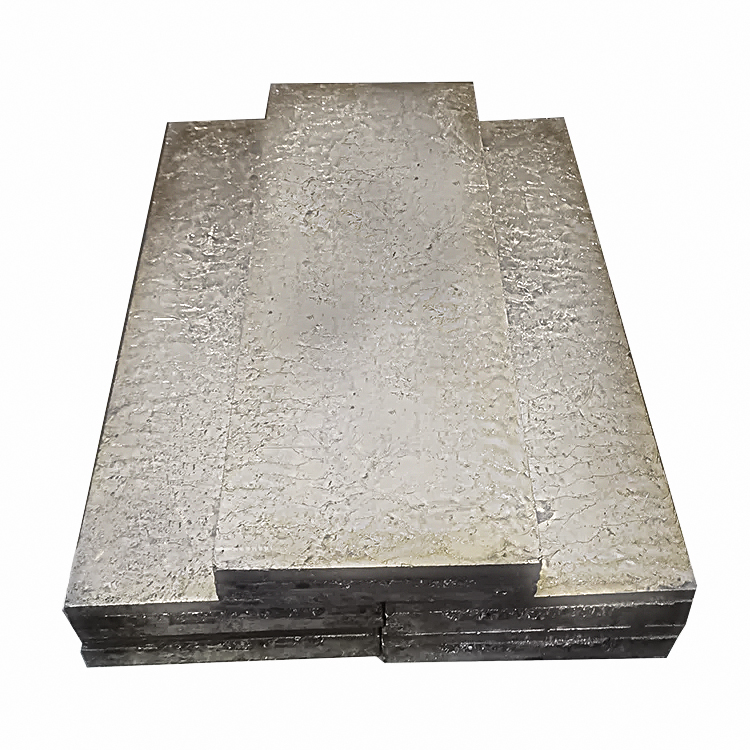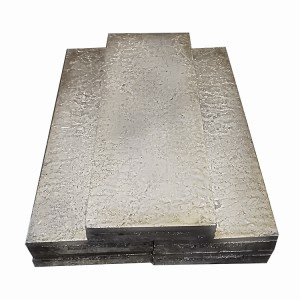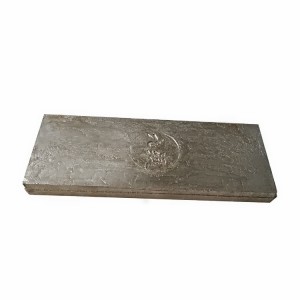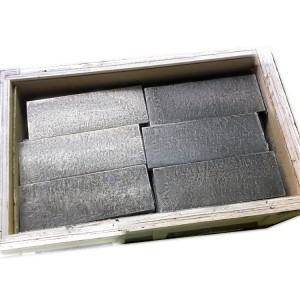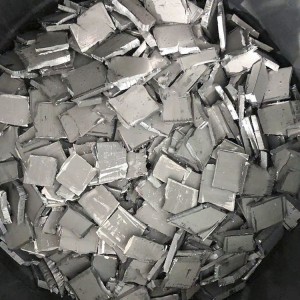Bismuth Metal
Product Parameters
|
Bismuth metal standard composition |
||||||||
|
Bi |
Cu |
Pb |
Zn |
Fe |
Ag |
As |
Sb |
total impurity |
|
99.997 |
0.0003 |
0.0007 |
0.0001 |
0.0005 |
0.0003 |
0.0003 |
0.0003 |
0.003 |
|
99.99 |
0.001 |
0.001 |
0.0005 |
0.001 |
0.004 |
0.0003 |
0.0005 |
0.01 |
|
99.95 |
0.003 |
0.008 |
0.005 |
0.001 |
0.015 |
0.001 |
0.001 |
0.05 |
|
99.8 |
0.005 |
0.02 |
0.005 |
0.005 |
0.025 |
0.005 |
0.005 |
0.2 |
Bismuth Ingot Properties (Theoretical)
| Molecular Weight | 208.98 |
| Appearance | solid |
| Melting Point | 271.3 °C |
| Boiling Point | 1560 °C |
| Density | 9.747 g/cm3 |
| Solubility in H2O | N/A |
| Electrical Resistivity | 106.8 microhm-cm @ 0 °C |
| Electronegativity | 1.9 Paulings |
| Heat of Fusion | 2.505 Cal/gm mole |
| Heat of Vaporization | 42.7 K-Cal/gm atom at 1560 °C |
| Poisson's Ratio | 0.33 |
| Specific Heat | 0.0296 Cal/g/K @ 25 °C |
| Tensile Strength | N/A |
| Thermal Conductivity | 0.0792 W/cm/ K @ 298.2 K |
| Thermal Expansion | (25 °C) 13.4 µm·m-1·K-1 |
| Vickers Hardness | N/A |
| Young's Modulus | 32 GPa |
Bismuth is a silvery white to pink metal,which are mainly used to prepare compound semiconductor materials, high-purity bismuth compounds, thermoelectric refrigeration materials, solders and liquid cooling carriers in nuclear reactors, ect. Bismuth occurs in nature as a free metal and mineral.
Feature
1.High-purity bismuth is mainly used in nuclear industry, aerospace industry, electronics industry and other sectors.
2.Since bismuth has semiconducting properties, its resistance decreases with increasing temperature at low temperatures. In thermocooling and thermoelectric power generation, Bi2Te3 and Bi2Se3 alloys and Bi-Sb-Te ternary alloys attract the most attention. In-Bi alloy and Pb-Bi alloy are superconducting materials.
3.Bismuth has low melting point, high density, low vapor pressure, and small neutron absorption cross section, which can be used in high-temperature atomic reactors.
Application
1. It is mainly used to prepare compound semiconductor materials, thermoelectric refrigeration materials, solders and liquid cooling carriers in nuclear reactors.
2.Used for preparing semiconductor high-purity materials and high-purity bismuth compounds. Used as a coolant in atomic reactors.
3. It is mainly used in medicine, low melting point alloy, fuse, glass and ceramics, and is also a catalyst for rubber production.



